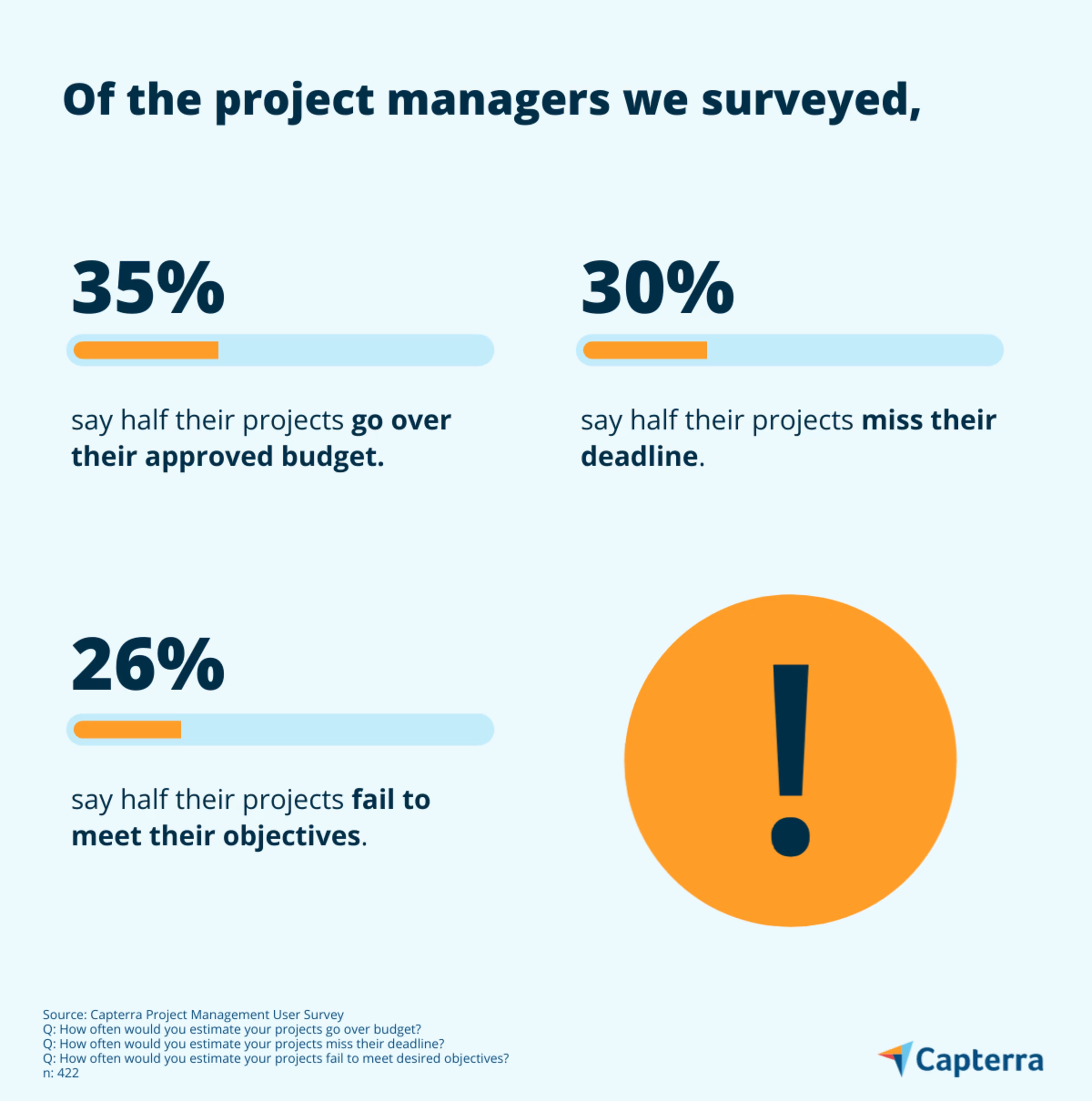Hybrid teams, hybrid PM methodologies, and hybrid project leaders. Here’s the what, why, and how of how to help drive the future of project management.

Today, one in four projects have a less than 50% chance of delivering results on time, which contributes to reducing the business value that is delivered as well as the likelihood of running over budget to accommodate the extended timeline. These are odds that businesses won’t risk. So what can you do to help your chances of project success?
The future of project management success belongs to the project managers (PMs) breaking the functional corporate silos as we know them. Successful PMs will be the ones who work with a hybrid approach and mindset. And by “hybrid,” we are referencing the PM’s ability to take on multiple roles, deliver comprehensive business value, and lead cross-functional/diverse teams.
In this article, we'll share the top current trends based on our recent Project Management User survey results from 422 PMs* and explain what you, as a PM, can do now to help drive the future of project management.
Current fact: The project failure rate is too high
While we know there’s always room for improvement, if you show the numbers below to any business leader, they’ll tell you that the failure rate is just too high. Leadership won’t feel confident supporting a portfolio where nearly one-third of the projects have a less than 50% chance of meeting at least one of the basic project metrics (budget, deadline, scope).

So how do you improve your own success rate? We’ve written several comprehensive guides addressing just this. For details on how to:
Improve your project success rate, check out this guide, “Project Success Metrics: Keeping Projects on Time & on Budget.”
Establish a better way to track your projects, check out “4 Project Tracking Best Practices.”
Better manage a portfolio of projects, read “3 Strategies for Managing Multiple Projects at Once.”
Current fact: Agile isn’t the end-all, be-all we think it is
For the past decade or longer, agile project management has been the cool kid on the block, with many companies being told it’s “agile or bust.” But our survey found that only 17% of PMs rely solely on the agile project management methodology, but over half (51%) are using integrated project management (IPM).

I wasn’t surprised by this, as in my personal experience as an IT project manager, senior management doesn’t have the appetite for approving projects without knowing exactly what they’re getting (i.e., waterfall projects). For example, a proposal for an agile project where the product requirements, timeline, and even exact budget are all a bit mushy at the start will likely be deemed too high a risk for many executives to green light.
So while agile may be great for software development teams during the execution phase of a project, you, as the PM, need to be able to weave in more traditional methodologies for the initiation, planning, and closing phases. This way, leadership can get the information they need to feel confident in supporting the project, and the execution team has the flexibility to work the way they prefer.
Essentially, PMs need to be adaptable and knowledgeable in myriad project management techniques in order to lead diverse teams and meet the expectations of business leaders with differing risk tolerances.
Current fact: Project team structures are hybrid
A strength in cross-functional teams is the ability to tap into and leverage a “hidden talent” of someone whose non-project work doesn’t require it. For example, maybe an accountant is also a fantastic quality assurance (QA) tester for new software releases. As a PM, you’re in the unique position to tap into these talents to help drive project success.

In addition to leveraging untapped skills from new team members, cross-functional teams can share their department’s best practices for the project team to then decide whether or not they want to incorporate into their own processes.
However, a potential pitfall with cross-functional teams is that each member will likely bring differing processes and varying work styles with them. As the PM, you can help ease these challenges by setting clear project team rules, defining a clear decision-making process (and making a RACI matrix), and encouraging open communication before the project starts.
Future fact: Project managers will be both human and dancer
Project design and execution methodologies are hybrid. The best PMs are going to be hybrid. They’ll be leaders and also workers, both technically knowledgeable and business savvy—problem finders yet also designers of the solution.
The PM’s secret weapon: The ability to connect the dots between strategy and execution.
In order to connect these dots, PMs will need to focus on strengthening the following skills:
Empathy
Data-driven decision-making
Persuasion
Legal and regulatory compliance understanding (as applicable)
Adaptability
Motivation
Online/remote collaboration and leadership
Thoughtful customer service
Solution design thinking
These aren’t skills that you can just read a professional development book over a long weekend to gain, and it’s not work that everyone is suited for. But if you’ve got some human and some dancer in you, the future of project management is bright.
Recommended reading
OurProject Management Software Buyers Guide:In this guide, we'll answer the question of "what is project management software," how it benefits you, the typical functionality offered, a pricing overview, and a few things to consider when you decide to invest in a PM tool.
Capterra’sProject Management Software Shortlist:We analyzed all 1187 products in our project management software directory and took the highest-rated and most popular products and plotted them for you. Cross-Functional Communication Best Practices To Boost Collaboration:Making communication and collaboration efficient and easy for your cross-functional teams requires strategic changes within your organization. Learn some of the best practices to get there.
Methodology
Capterra’s Project Management User Survey was conducted in March 2021 among 422 U.S.-based project managers. The qualified respondents are decision-makers or have significant involvement with the day-to-day project management at their organization. We worded the questions to ensure that each respondent fully understood the meaning and the topic at hand.
All percentages are rounded to the nearest whole number.